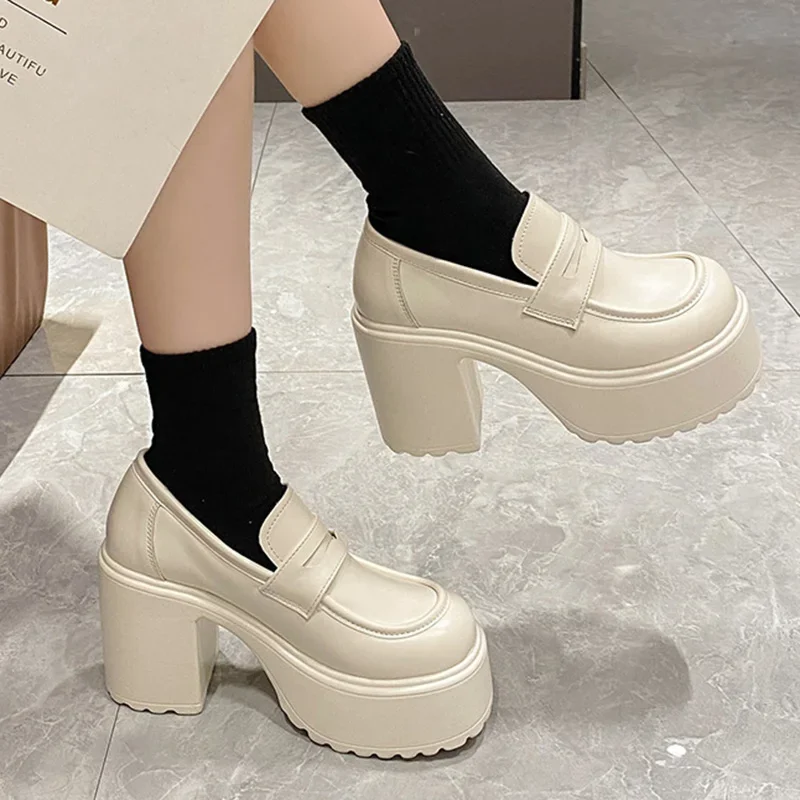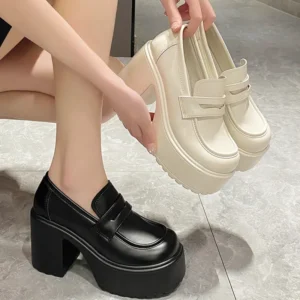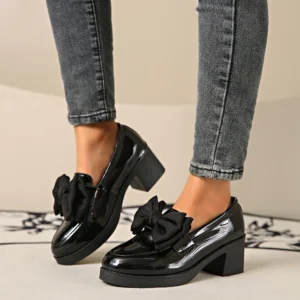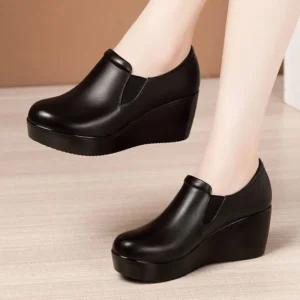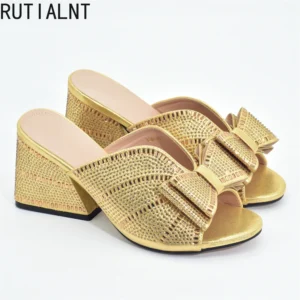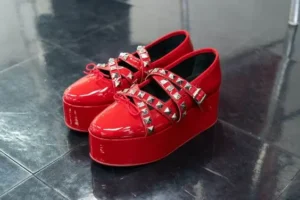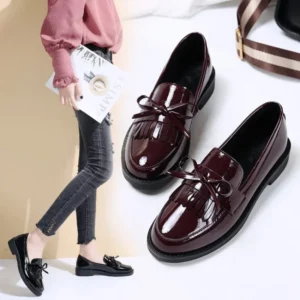Understanding the Loafer Basics: A Timeless Footwear Classic
Loafers are the epitome of effortless style – slip-on shoes without laces that offer both comfort and versatility. Originally inspired by Norwegian fishermen’s practical footwear, these shoes have traversed a fascinating journey from purely functional to fashion staple. What began as casual footwear has evolved into a diverse category that works equally well in business settings and formal occasions.
Traditional loafers share several defining characteristics that have contributed to their enduring popularity:
- Laceless design for easy wearing
- Typically made of leather or suede
- Feature a separate piece of leather across the vamp (the top of the shoe)
- Sturdy, comfortable sole for everyday wear
- Versatile styling potential across various outfits
Classic variations like penny loafers (with their distinctive slot for a coin), tassel loafers (adorned with decorative tassels), and horsebit loafers (featuring a metal horse bit detail) have become wardrobe staples. In recent decades, loafers have undergone another transformation with the introduction of elevated styles—specifically platforms and flatforms—that maintain the classic loafer silhouette while adding significant height and visual impact.
Knowing how to incorporate these timeless shoes into your wardrobe enhances their versatility, especially when considering professional office loafer outfits that seamlessly transition from boardroom to after-work events.
Defining the Elevated Styles: What Makes a Platform Different from a Flatform?
While both platform and flatform loafers provide added height, their construction creates distinctly different appearances and wearing experiences. Understanding these differences is crucial for making an informed decision about which style best suits your needs.
Platform Loafers:
– Feature a thick sole that elevates the entire foot
– Have a noticeable incline from toe to heel (higher heel than toe area)
– Typically add 1-3 inches (2.5-7.5 cm) of height
– Create a sloped profile when viewed from the side
– Offer a dramatic silhouette change
Flatform Loafers:
– Feature a thick sole that maintains uniform height throughout
– Have the same elevation at both toe and heel areas (no slope)
– Typically add 0.5-2 inches (1.3-5 cm) of height
– Create an even, level profile when viewed from the side
– Provide a modern, architectural appearance
These structural differences dramatically impact how each style looks and feels. Platforms emerged in the 1970s disco era and have made recurring fashion comebacks, while flatforms gained prominence in the 2010s as part of the minimalist fashion movement seeking height without the discomfort of traditional heels.
The visual impact of these elevated styles makes them perfect for creating platform loafers standout looks that command attention while maintaining the classic loafer’s inherent sophistication.
Platform Loafers: Structure and Characteristics
Platform loafers feature a distinctive construction that sets them apart from their flat counterparts. The platform sole is significantly thicker at the heel than at the toe, creating a noticeable slope that mimics the incline of a traditional heel while providing more support.
Key characteristics of platform loafers include:
- A thick sole that elevates the entire foot but with a higher heel section
- Height differential between toe and heel typically ranging from 0.5-2 inches (1.3-5 cm)
- Overall height increase of 1-3 inches (2.5-7.5 cm)
- Construction materials including wood, cork, rubber, or synthetic compounds
- A distinct sloped appearance creating an elongating effect on the leg
The platform construction affects how the shoe flexes during walking. With more rigid materials, platform loafers may have less natural bend at the ball of the foot, requiring a slightly different walking motion than flat shoes. Higher platforms (2+ inches) significantly alter the foot’s biomechanics, shifting weight distribution and creating a more dramatic walking posture.
Our collection of women’s platform chunky loafers showcases various heights and designs that balance style and wearability while providing that coveted elevated look.
Flatform Loafers: Structure and Characteristics
Flatform loafers represent a more modern take on elevated footwear, with their defining characteristic being the completely level sole from toe to heel. This uniform construction creates a distinctive silhouette that’s both contemporary and architectural in appearance.
Key characteristics of flatform loafers include:
- A thick sole with identical height at both toe and heel
- Typical height ranging from 0.5-2 inches (1.3-5 cm)
- Consistent elevation across the entire foot
- Construction materials often including rubber, EVA, cork, or synthetic compounds
- A straight, even profile when viewed from the side
Flatform construction typically allows for more natural foot flexion during walking compared to some platform styles. The even distribution of height means that your foot remains in a more natural position rather than being pitched forward as with heeled shoes. This contributes to their reputation for greater stability and comfort during extended wear.
For quality construction that ensures both style and durability, our women’s leather platform loafers collection demonstrates how premium materials enhance both the appearance and longevity of elevated loafer styles.
Comfort Comparison: Walking Experience and All-Day Wearability
When it comes to comfort, the structural differences between platform and flatform loafers create distinctly different wearing experiences. Understanding how each style affects body mechanics can help you choose the option that best suits your lifestyle needs.
Platform Loafers: Comfort Profile
– Weight distribution shifts slightly forward due to heel-toe height differential
– Pressure points concentrated more on the ball of the foot
– Creates a walking posture similar to wearing a low heel
– Can provide beneficial arch support for some foot types
– May require an adjustment period for those not used to heeled footwear
Flatform Loafers: Comfort Profile
– Weight distributed evenly across the entire foot
– Pressure points more balanced between heel and forefoot
– Maintains a more natural walking posture
– Provides stability similar to flat shoes but with added height
– Generally requires minimal adaptation time
For all-day wear, flatforms typically edge out platforms in the comfort department, particularly for those unaccustomed to heels. However, well-designed platform loafers with moderate height differences can be surprisingly comfortable for extended periods, especially when they incorporate cushioning and proper arch support.
| Comfort Factor | Platform Loafers | Flatform Loafers |
|---|---|---|
| Weight Distribution | Forward-shifted | Even throughout |
| Stability | Moderate | High |
| Learning Curve | Requires adaptation | Minimal |
| All-Day Wear | Good (lower heights) | Excellent |
| Arch Support | Often built-in | May need inserts |
Finding comfortable low heel loafers that provide the perfect balance of height and wearability is essential for those who prioritize comfort but still want a touch of elevation in their footwear.
Style Impact: How Each Elevated Loafer Affects Your Overall Look
The choice between platform and flatform loafers creates distinctly different visual effects that can dramatically alter your silhouette and outfit proportions.
Platform loafers create a dynamic look that:
– Elongates the leg line with their sloping design
– Adds height while maintaining a feminine silhouette
– Creates a more dramatic, fashion-forward appearance
– Makes a stronger style statement
– Often reads as more dressed-up or evening-appropriate
Flatform loafers, by contrast, offer:
– A modern, architectural aesthetic
– Clean lines that complement minimalist outfits
– A contemporary edge to classic looks
– Casual elevation that doesn’t overpower an outfit
– A more relaxed yet polished vibe
For petite individuals, both styles add welcome height, though platforms may create a more leg-lengthening effect. Taller individuals often gravitate toward flatforms for added height without overwhelming their natural stature. Those with wider feet may find flatforms more accommodating and balanced in their visual proportions.
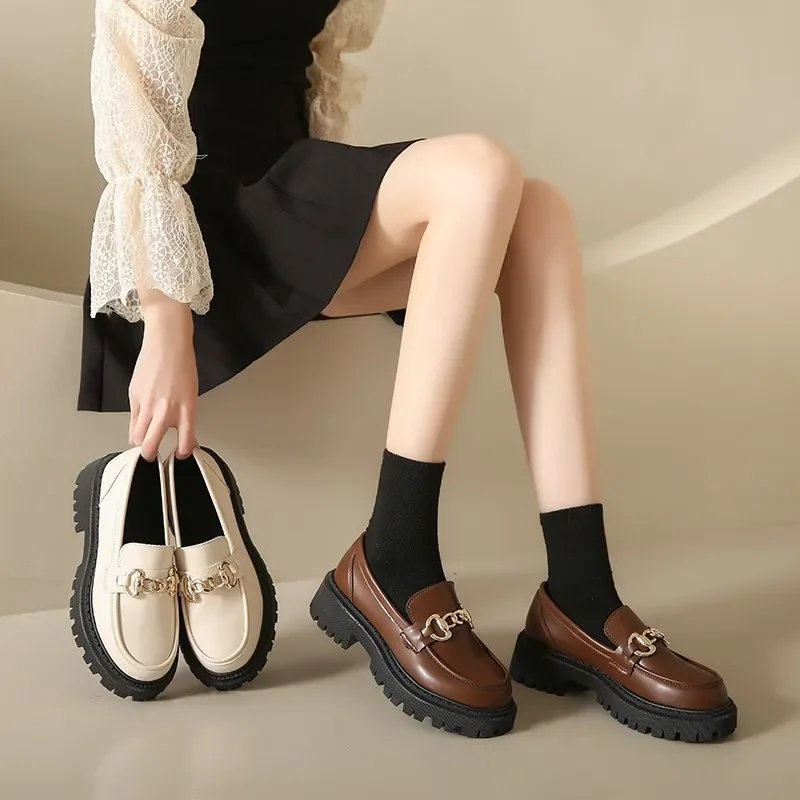
Understanding the visual impact platform loafers have on your overall appearance helps you leverage their height-enhancing benefits while maintaining balance in your outfit proportions.
Versatility Factor: Matching Your Elevated Loafers to Different Occasions
The versatility of both platform and flatform loafers extends across multiple settings, though each style shines in different environments.
Platform Loafers: Occasion Suitability
– Creative workplaces: Perfect for fashion-forward office environments
– Evening events: Provides dressy elevation for cocktail attire
– Fashion-focused occasions: Makes a statement at gallery openings or fashion events
– Fall/winter seasons: Pairs beautifully with tights and heavier fabrics
– Date nights: Adds sophisticated height without the instability of stilettos
Flatform Loafers: Occasion Suitability
– Casual outings: Elevates weekend wear without seeming overdressed
– All-day city exploring: Provides height without sacrificing walking comfort
– Relaxed office environments: Offers professional elevation with practical comfort
– Spring/summer occasions: Works well with lighter fabrics and bare legs
– Travel: Combines comfort and style for versatile packing
For transitioning between occasions, platform loafers pair wonderfully with tailored trousers and blouses for day, then seamlessly shift to evening with a simple change to a sleek dress. Flatforms transition effortlessly from casual weekend wear with jeans to more polished looks with wide-leg pants or midi skirts.
Knowing how to wear loafers to the office provides valuable guidance for incorporating these elevated styles into professional settings without sacrificing formality or comfort.
Stability and Balance: Safety Considerations for Elevated Footwear
The structural differences between platform and flatform loafers significantly impact stability and balance considerations, which should factor into your decision-making process.
Platform loafers present several stability considerations:
– The heel-to-toe height differential creates a forward tilt similar to heels
– Center of gravity shifts slightly forward when standing
– Requires more ankle strength and balance when navigating uneven surfaces
– May be challenging in wet or slippery conditions
– Higher styles require practice for confident walking
Flatform loafers offer different stability dynamics:
– Even height distribution maintains a more natural standing position
– Wider base provides greater inherent stability
– Reduced ankle flexion required for walking
– More predictable on varied surfaces
– Generally safer option for those with balance concerns
For individuals with ankle instability or balance issues, flatforms typically provide a more secure option. However, both styles benefit from features like textured outsoles for grip and properly fitted uppers that secure the foot firmly in place.
Women's Black Platform Loafers, Women's High Heel Loafers, Women's High Platform Loafers, Women's White Platform Loafers
$106.67 Select options This product has multiple variants. The options may be chosen on the product pageWomen's Black Heeled Loafers, Women's Black Platform Loafers, Women's Block Heel Loafers, Women's Chunky Heel Loafers
$72.58 Select options This product has multiple variants. The options may be chosen on the product pageWomen's High Platform Loafers, Women's Wedge Heel Loafers
$171.07 Select options This product has multiple variants. The options may be chosen on the product pageWomen's Black Platform Loafers, Women's High Heel Loafers, Women's High Platform Loafers
$86.22 Select options This product has multiple variants. The options may be chosen on the product pageWomen's Black Platform Loafers, Women's Lug Sole Loafers
$330.45 Select options This product has multiple variants. The options may be chosen on the product pageWomen's Black Platform Loafers, Women's Classic Tassel Loafers, Women's Leather Platform Loafers
Price range: $115.85 through $122.08 Select options This product has multiple variants. The options may be chosen on the product page
Our selection of women’s lug sole loafers features enhanced traction patterns that increase stability without sacrificing style, making them an excellent choice for those prioritizing secure footing in elevated footwear.
Styling Guide: Making the Most of Platform Loafers
Platform loafers make a bold fashion statement, and styling them effectively balances their dramatic height with complementary pieces that create cohesive looks.
For maximum style impact with platform loafers:
- Pair with cropped pants or ankle-length trousers to showcase the shoe’s distinctive profile
- Balance the chunky shoe silhouette with streamlined tops and structured jackets
- Create contrast with feminine pieces like pleated midi skirts or A-line dresses
- Use platform loafers to add edge to classic pieces like blazers and straight-leg jeans
- Consider proportions—higher platforms work well with wider-leg pants, while lower platforms complement slimmer silhouettes
Seasonal styling approaches vary as well. In cooler months, platform loafers look sophisticated with textured tights and midi skirts or layered with ankle socks and cuffed jeans. For warmer seasons, they add unexpected edge to flowing dresses or tailored shorts.
When accessorizing, consider balancing the substantial nature of platform loafers with complementary pieces—structured bags, chunky jewelry, or bold scarves can create cohesive looks that incorporate the shoes’ statement-making quality.
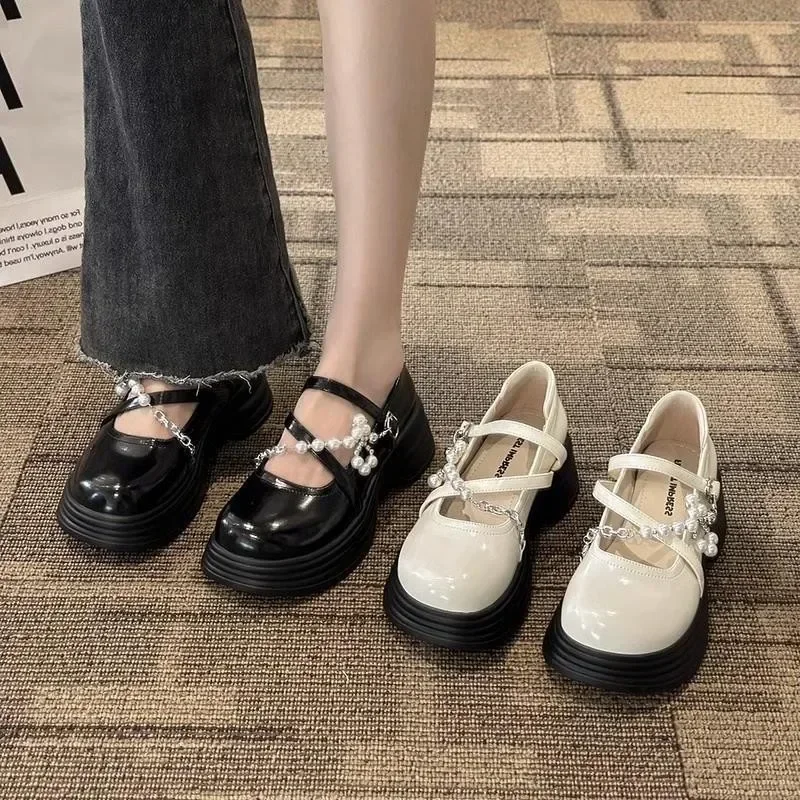
For those looking to make a fashion statement, our guide to step up style trend-forward platform loafers provides inspiration for incorporating these eye-catching shoes into contemporary outfits.
Styling Guide: Making the Most of Flatform Loafers
Flatform loafers offer modern elevation with clean lines that complement a variety of clothing styles. Their architectural aesthetic pairs beautifully with both structured and flowing pieces.
For creating stylish flatform loafer looks:
- Combine with wide-leg pants or culottes for a contemporary silhouette
- Pair with midi-length skirts or dresses to highlight the shoe’s distinctive profile
- Use flatforms to add height to casual outfits like straight-leg jeans and oversized sweaters
- Layer with ankle socks in coordinating colors for a playful, modern look
- Embrace the juxtaposition of the chunky shoe with more delicate clothing items
For seasonal transitions, flatform loafers work year-round. In spring and summer, they complement cropped pants and flowing dresses, while fall and winter see them paired effectively with tights and heavier fabrics. Their year-round versatility makes them an excellent investment piece.
When accessorizing, flatforms pair well with minimal, geometric jewelry and structured bags. Their clean lines support both understated looks and more dramatic outfit combinations.
Creating versatile business casual loafer outfits becomes simpler with flatform styles that provide professional elevation while maintaining all-day comfort for busy workdays.
Durability Factors: Lifespan Expectations for Elevated Loafers
The construction differences between platform and flatform loafers affect not only their appearance and comfort but also their durability and longevity. Understanding these differences helps set appropriate expectations for your investment.
Platform Loafers: Durability Considerations
– Higher stress on the connecting point between upper and platform
– More complex construction often requires specialized repair
– Weight distribution may cause faster wear on the ball of the foot area
– May be susceptible to separation between platform and upper over time
– Often features more components that could potentially fail
Flatform Loafers: Durability Considerations
– Even weight distribution typically results in more uniform wear
– Simpler construction may be easier to repair
– Less stress on connection points due to even height
– May show edge wear around the perimeter of the sole
– Generally fewer components that could fail
Quality indicators for both styles include:
– Visible stitching (rather than just gluing) connecting upper to sole
– Robust heel counter that maintains its shape when pressed
– Flexible materials at the forefoot that allow natural bending
– Well-finished edges with no visible glue marks
– Consistent stitching throughout
Our collection of women’s black platform loafers demonstrates quality construction techniques that enhance both aesthetic appeal and long-term durability.
Care Guide: Maintaining Your Elevated Loafers
Proper maintenance significantly extends the life of elevated loafers, preserving both their appearance and structural integrity. Different materials require specific care approaches for optimal results.
For leather elevated loafers:
– Clean regularly with a soft cloth to remove surface dust and debris
– Apply leather conditioner every 3-4 months to prevent drying and cracking
– Use specialized leather cleaner for stains, following product instructions carefully
– Allow wet leather shoes to dry naturally at room temperature, never using direct heat
– Use shoe trees when not wearing to maintain shape
For suede elevated loafers:
– Brush with a specialized suede brush after each wear to restore nap
– Use protective spray specifically formulated for suede
– Address stains immediately with a suede eraser or specialized cleaner
– Keep away from water and moisture whenever possible
– Store with shoe shapers to maintain structure
Platform and flatform soles require additional care:
– Clean the edges of platform/flatform soles with a slightly damp cloth
– Use a soft toothbrush with mild soap for textured sole surfaces
– Apply edge dressing to refinish scuffed platform edges
– Check periodically for separation between sole and upper
– Seek professional repair at the first sign of sole separation
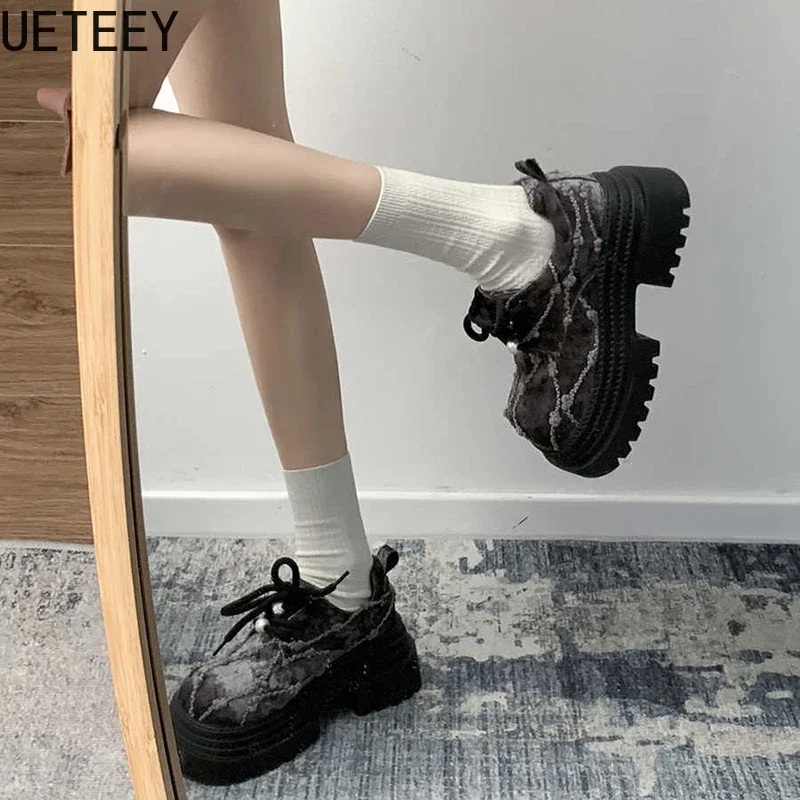
For comprehensive guidance on protecting your investment, our guide on how to care for leather loafers with heels provides detailed instructions for maintaining elevated styles.
Making Your Choice: Decision Factors for the Discerning Shopper
When deciding between platform and flatform loafers, consider these key factors to guide your selection:
Lifestyle Compatibility:
– Do you prioritize maximum comfort for long walking days? (Flatforms may be preferable)
– Are you seeking dramatic height and visual impact? (Platforms offer more dramatic elevation)
– How much walking or standing will you typically do in these shoes? (Flatforms generally offer better all-day comfort)
– Will you need to navigate varied terrain or primarily flat surfaces? (Flatforms provide more stability on uneven ground)
Physical Considerations:
– Height preference (Platforms typically offer more elevation)
– Foot structure (Those with high arches often find platforms more supportive)
– Ankle stability (Flatforms provide a more stable base for those with weaker ankles)
– Balance confidence (Flatforms require less adaptation for secure walking)
Style Alignment:
– Assess your existing wardrobe (Which style complements your current clothing better?)
– Consider your personal aesthetic (Modern minimalist or dramatic statement-maker?)
– Evaluate typical occasions (Professional settings might favor more subtle elevation)
– Seasonal versatility (Which style transitions better across your climate’s seasons?)
The ideal choice balances these considerations with your individual preferences and needs. Many discerning shoppers find that having both styles offers maximum versatility for different occasions and outfits.
Our collection of women’s high platform loafers offers options for those seeking maximum height with sophisticated styling.
FAQs: Common Questions About Platform and Flatform Loafers
Are platform or flatform loafers better for tall people?
While both styles work well for any height, tall individuals often prefer flatforms for their more subtle elevation and modern aesthetic. Platforms create a more dramatic look that some tall people may find too imposing, though this ultimately comes down to personal style preference rather than height rules.
Which style is more comfortable for standing all day?
Flatforms typically provide better all-day comfort due to their even weight distribution and more natural foot position. However, well-designed platform loafers with moderate height differences and proper cushioning can also be surprisingly comfortable for extended periods.
Can platform or flatform loafers be worn with formal attire?
Platform loafers in sleek materials like patent leather or with refined details can complement formal attire for fashion-forward events. Flatforms generally read as more casual and are better suited to semi-formal or business casual settings rather than truly formal occasions.
Are platform or flatform loafers suitable for people with foot problems?
This depends on the specific foot condition. Those with plantar fasciitis may benefit from the arch support often found in platform designs. People with balance issues or ankle instability typically find flatforms more secure. Anyone with foot concerns should consult a podiatrist before choosing elevated footwear.
How do you break in new elevated loafers?
Wear them for short periods initially, gradually increasing duration. Using shoe stretchers overnight can help, as can applying leather conditioner to soften leather uppers. Moleskin padding can protect pressure points during the breaking-in period.
Can you resole platform or flatform loafers?
Many quality elevated loafers can be resoled by skilled cobblers, though the process is more complex than with traditional flat shoes. Shoes with the sole directly molded to the upper may not be candidates for resoling. When investing in premium elevated loafers, ask about repair possibilities before purchasing.

